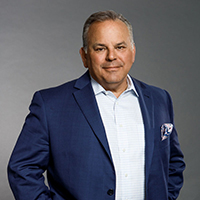
March 27, 2019
By Gary Brooks, CMO, Syncron
“Disruption” is one of the most used buzzwords in technology circles today. And for good reason. Nearly every industry is seemingly always on the edge of evolution and change with new, emerging technologies. Companies are constantly rising up and replacing older ones resistant to change — see Netflix vs. Blockbuster or Uber vs. taxi companies.
But “disruption” isn’t only limited to the consumer tech space. It also plays an increasingly major role in the manufacturing sphere. The manufacturing industry is at arguably one of the biggest crossroads in its history, with OEMs (original equipment manufacturers) faced with a significant choice: either embrace servitization or maintain the status quo.
In the emerging servitization-centered economy, where a growing number of companies are shifting from selling products to selling access to and the outcome those products deliver, manufacturers are redefining the way they do business and focusing on their ability to maximize the uptime of the products they offer. This shift is placing after-sales service businesses in the spotlight, as this function is critical to manufacturers’ ability to deliver maximized product uptime as a service to their customers.
Below are three key traits of manufacturers that are prepared to embrace the shift to servitization and succeed:
To succeed now in the servitization era, manufacturers must be willing to make changes soon. An effective servitization strategy cannot just be implemented overnight. So, the C-suite must buy-in quickly to set aside the appropriate resources to establish the necessary infrastructure. The good news is that more executives seem to be warming up to servitization. In fact, 66 percent of manufacturers indicated that they’re beginning to feel pressure from the executive suite to shift away from a reactive, break-fix service model and move towards one focusing on maximized product uptime.
The traditional, break-fix model of service – where a product is repaired after it has already failed – has been the way of doing business for the manufacturing industry for decades. Through this model, a piece of machinery is sold and delivered to the customer, it operates, it breaks, a service call is made, a service part is sold and shipped and then the repair is made by a field service technician. The customer is on the hook for all the risk and costs of service disruptions.
In a servitization-centered business, however, the emphasis is on the manufacturer to make proactive repairs to preempt any breakdowns. This means that manufacturers must ensure that they have a sophisticated service parts management solution in place so that replacement parts are available when and where they are needed.
With the shift away from selling products outright, OEMs will have to rethink their revenue reporting by focusing on the recurring revenue from subscription-based services, as customers will be subscribing to their equipment in the same way they subscribe to Netflix.
The realization of a servitization-centered economy is a marathon, not a sprint, and it’s here to stay. OEMs that have a strong vision for maximizing product uptime, with executives that are driving their company to make the vision a reality, have a head start on this journey. Those that make the necessary investments in technology, resources and training – optimizing their service supply chains along the way – will be the ones to come out on top.
 About the Author
About the Author
As Chief Marketing Officer at Syncron, Gary Brooks is responsible for global marketing and focuses on enabling leading manufacturers around the world transform their after-sales service operations to maximize product uptime.
In this episode, I sat down with Beejan Giga, Director | Partner and Caleb Emerson, Senior Results Manager at Carpedia International. We discussed the insights behind their recent Industry Today article, “Thinking Three Moves Ahead” and together we explored how manufacturers can plan more strategically, align with their suppliers, and build the operational discipline needed to support intentional, sustainable growth. It was a conversation packed with practical perspectives on navigating a fast-changing industry landscape.